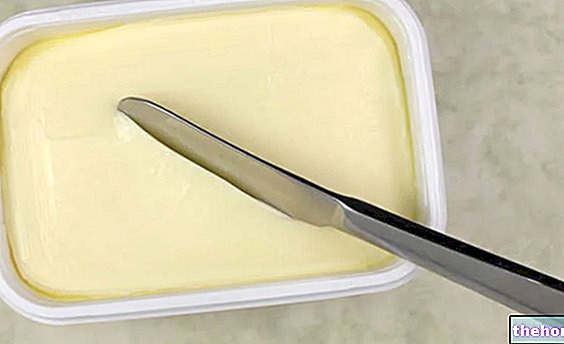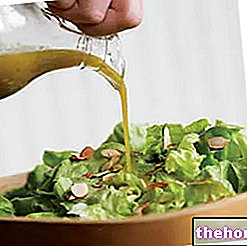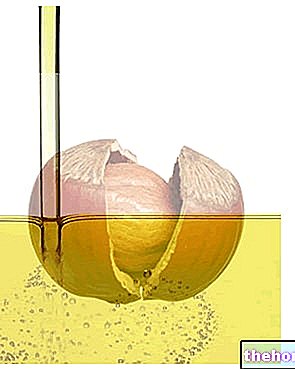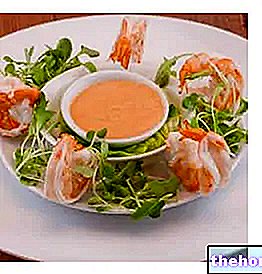Chemical Composition and Nutritional Contributions
The butter appears, at temperatures below 23 ° C, as a plastic mass, with a solid consistency and a yellowish color; pleasant smell and taste are reminiscent of cream, even if stronger, because obviously the butter is more concentrated.
The butter melts between 28 and 33 ° C; its chemical composition is as follows:
water 15-18%
fat 80-84% (by law, minimum 80 in salty, minimum 82 in unsalted)SNF (non-fat solids) 1-2% of which:
proteins: 0.4-0.8%
lactose: 0.5-1%
mineral salts: 0.1-0.2%
In addition to triglycerides, the fat fraction also includes phospholipids (1-1.5%) and an unsaponifiable portion: sterols, basically cholesterol (0.1-0.2%), fat-soluble vitamins and squalene. The composition of the lipid fraction (in triglycerides, fatty acids and sterols ...) is identical to that of milk. Among the substances present in traces, very important for the organoleptic characteristics, are mentioned diacetyl, acetylmethylcarbinol, aldehydes, ketones and lactones.
If eaten raw, the butter is highly digestible, while fried - a practice absolutely inadvisable due to its low smoke point - as well as being difficult to digest, it degrades by enriching itself with toxic substances.
From a nutritional point of view, butter is an excellent food, because it is obtained only by physical means, just like extra virgin olive oil, and easily digestible, because it is rich in short-chain fatty acids. moderation, since, being of animal origin, it is rich in saturated fatty acids, including the "dangerous" palmitic, and cholesterol; it is also a very caloric food, even if in this sense it is lighter than olive or seed oil (30% less calories). To learn more: butter or margarine? oil or butter?
Current legal provisions allow the addition, during processing, of antimicrobial additives (ascorbic acid and sorbates, max dose 500 mg / kg), antioxidants (ascorbyl palmitate, max dose 0.3%), tocopherols (max dose 0.03 %) and octyl and dodecyl gallates (max dose 0.01%). The addition of natural dyes, such as saffron and annatto, and salt is also allowed (salted butters have a maximum NaCl content of 2%, which is detrimental to fat; they are widely used in the Nordic countries).
Butter, like virgin olive oil, is a condiment obtained exclusively through mechanical operations and as such free from rectification and hydrogenation treatments.
Classification and Types of Butter
The law provides that butter contains at least 80% fat. It also allows the production of:
light butter with reduced fat content (or "3/4" butter) with 60-62% lipids;
light low-fat butter (or "half" butter) with 39-41% fat.
We can also find denominations of the "traditional butter" type, obtained simply from milk cream and not from whey, "concentrated butter", in which the lipid phase is higher than common butter (up to 99.8%) and makes it suitable to "use in the confectionery industries, and" de-cholesterol butters ", to which cyclodextrins are added during the production process (these substances of biotechnological origin incorporate cholesterol forming a complex which is then removed by centrifugation) with the aim of reducing the content in cholesterol up to 65%.
Bibliography
FOOD CHEMISTRY, Cabras and Martelli, Ed. Piccin
FOOD CHEMISTRY, vANNUCCHI HATS, Ed. Zanichelli
Other articles on "Butter: nutritional value and classification"
- Churning
- Butter
- Butter or margarine?
- Oil or Butter?




























